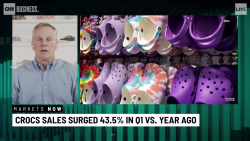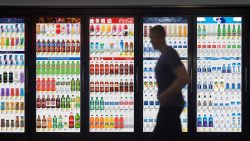America’s retail chains have proven surprisingly strong during the pandemic.
But a slowing economy may bring a fresh wave of store closings and bankruptcies. Retailers that sell mostly discretionary goods, cater to middle and lower-income consumers and have weak balance sheets will be most vulnerable.
Bed Bath & Beyond (BBBY), Rite Aid (RAD), Party City (PRTY), Tuesday Morning (TUES), Joann and others currently have an elevated risk of bankruptcy, according to credit agencies, and will be most exposed if economic conditions deteriorate.
Other struggling chains, such as Gap (GPS), may be forced to close hundreds of stores, analysts say. And e-commerce companies such as Wayfair (W)and Stitch Fix (SFIX) that have slashed jobs in recent months may have to cut further.
“The companies that were skating on the edge before Covid had this brief reprieve. Now we’re going back to the old rules,” said Berna Barshay, an independent retail analyst.
These retailers and many others are currently grappling with a combination of forces that include higher costs, excess inventory, and financially-strapped customers.
As the pandemic has receded, consumers have been shifting their spending from goods to services such as travel and entertainment. Inflation is bearing down, causing a drop in consumer confidence and a pullback in discretionary areas such as furniture and apparel.
That’s why retailers’ inventories are bloated and companies are resorting to promotions to try to stimulate demand, chipping away at their profits.
“We believe many will turn to aggressive discounting to solve their inventory problem, which is likely to spark a ‘race to the bottom,’” Morgan Stanley analysts said in a report Monday. “This dynamic will weigh heavily on margins and fuel [an] earnings slowdown.”
The Federal Reserve is also quickly raising interest rates to combat inflation, which is likely to cause some economic pain and job losses. The Fed anticipates that the unemployment rate could climb to 4.4% next year, up from 3.5% in September.
Many investors and economists are predicting a recession. Such a scenario would result in a downturn for the industry.
“This will put highly-levered retailers and weak companies at risk,” said Raya Sokolyanska, an analyst at Moody’s. “We expect defaults among speculative grade retailers to increase.”
The sector has been resilient for much of the pandemic, a break from prior years of bankruptcies and store closings that became known as the “retail apocalypse.” The sector is actually in a stronger position than it was before the pandemic, analysts say.
At the beginning of the pandemic, stores temporarily closed to halt the spread of Covid-19 and retail sales tumbled. This pushed already struggling chains, such as JCPenney, Neiman Marcus and J. Crew, into bankruptcy. “That wave of defaults effectively flushed out a lot of debt and unprofitable stores from the sector,” Sokolyanska said.
Retail sales quickly recovered thanks to federal stimulus checks, growing personal savings accounts and pent-up consumer demand.
Supply was also tight, allowing many chains to sell their merchandise at higher prices for the first time in years. “This was a tide that lifted all boats. For many companies, 2021 was a year of record profits,” Sokolyanska said.
Retail sales remain above pre-pandemic levels and more stores have announced openings than closings this year. Retail bankruptcies have also been at their lowest level in more than a decade.
Although 2023 is expected to be a challenging year for the sector, it won’t be as dire as before the pandemic. Many companies are in better financial shape from previous restructurings and have closed their weakest stores.
“We expect defaults to be below the prior peaks,” she said.

























